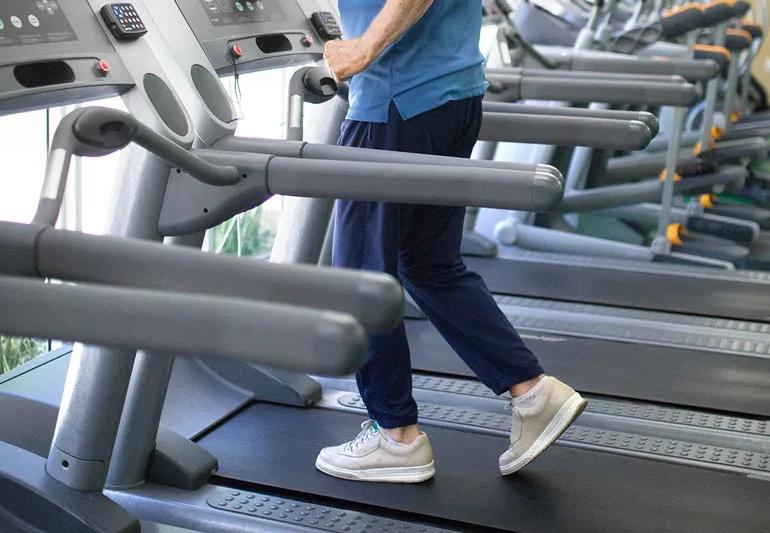What to expect from a supervised walking program

If you have peripheral artery disease (PAD), you know all about the pain that can come from just a short walk.
Advertisement
Cleveland Clinic is a non-profit academic medical center. Advertising on our site helps support our mission. We do not endorse non-Cleveland Clinic products or services. Policy
PAD occurs when plaque builds up inside your arteries. Over time, plaque hardens and results in severely restricted blood flow within your legs, causing pain when you walk.
But numerous studies have shown that a form of noninvasive treatment — supervised exercise therapy — can help people with PAD walk farther with less pain.
Supervised exercise therapy for peripheral artery disease is reimbursed under Medicare. It includes up to 36 exercise sessions supervised by a medical professional over the course of 12 weeks.
“The goal is to enable patients to prolong the amount of time that they are able to walk without experiencing what we call claudication in their legs,” says Erik Van Iterson, PhD, MS, Director of Cardiac Rehabilitation. Claudication is the medical term for discomfort or pain caused by too little blood flow to the leg muscles that you use to walk.
A recent study analyzed 25 clinical trials on supervised exercise therapy and found that total and pain-free walking distances improved for those participating in regular walking. Researchers have also found that supervised exercise therapy for PAD may be just as effective as leg stent treatment.
In order to see that kind of improvement, you’ll need to consistently walk to a level of moderate to strong discomfort.
Advertisement
“That feeling of discomfort in your legs when you walk is actually the body’s signal to let you know that blood flow down in the arterial vessels is working its way through the muscle and delivering the intended benefit,” Dr. Van Iterson explains.
In supervised exercise therapy, you’ll likely be recommended to attend three weekly sessions where the general goal over the course of your program is to work toward accumulating up to one hour of walking time on a treadmill. A typical session may look like this:
Dr. Van Iterson notes that the people most likely to benefit from this treatment are those who commit to walking consistently — and not just on the days of supervised exercise therapy.
“That means pretty much every day,” he says. “Yes, you’re only in supervised exercise therapy three days a week, but you really need to be doing similar levels of walking on your own for the other four days.”
The ultimate goal is to get to the point where you can navigate activities of daily living, like walking to get the mail or going grocery shopping, without being burdened by physical pain caused by PAD.
That may not happen in 12 weeks, and if it doesn’t, that’s OK. Lack of major improvement at the end of 36 supervised exercise therapy sessions doesn’t mean walking therapy is not working. Dr. Van Iterson explains that part of the idea is that exercise therapy will help you establish a baseline of habit, so that you can keep up this type of exercise indefinitely. There is a dose-benefit response to walking therapy, so the more you walk on a consistent and long-term basis, the more likely you are to see a benefit.
If walking therapy does not improve your symptoms, your doctor may recommend other potential treatment options.
Advertisement
Learn more about our editorial process.
Advertisement

Expert advice on different heart-friendly diets

At-home treatments and lifestyle changes may help ease the symptoms and improve the appearance of varicose veins — but they aren’t a cure

Physical activity can help preserve and improve your cognitive function and fend off dementia, stroke and other health concerns

Lower-intensity workouts can deliver high-quality health and fitness results

Incremental changes in your exercise routine can improve your strength and endurance over time

Understanding heart rate zones can help you tailor your workout to reach your goals

Increase the size of your muscles by bulking up on protein and focusing on slow, intense movements with progressive overloading

Low-impact exercises help you recover faster between sets, during cool downs and on rest days

Babies can get congested easily, but you can calm their cough by keeping them hydrated, using nasal drops and running a humidifier

Weight loss may cause loose, sagging skin and muscle loss to your rear

Several conditions, like vitiligo and fungal infection, can cause a loss of pigmentation, leading to white spots or patches on your skin